The Outsiders, by Joomboos: First Bilingual Teen Series (Trailer, Episode 1)
June 19, 2022 - An interesting and innovative initiative from the hit YouTube channel, JoomBoos, as they launch 'The Outsiders', the first bilingual teen series in the region. Watch the trailer and first episode below.
Finding a more global audience and reaching the diaspora has always been a challenge for Croatian-language media, and one of the reasons why I enjoy running TCN so much. There is so much amazing content taking place in Croatia every day all over the country, the majority of which sadly remains in the Croatian language, and as such is only consumed by a tiny percentage of its potential audience. Simply retelling those stories on TCN in English immediately widens the appeal and interest, and I have been fortunate to have had so much incredible content to choose from over the years.
Reaching more international markets as a Croatian broadcaster can be particularly challenging, with few Croatian-language productions making it to the international stage (the excellent The Paper on Netflix) is a notable exception.
And so I am intrigued to follow the progress of an interesting new teen series called The Outsiders, which aired its first episode on the phenomenally successful JoomBoos YouTube channel this week, and which will be broadcasting a new episode each Thursday. It is I think the first bilingual teen series in the region, predominantly in English, but with a sizable amount in Croatian, from different dialects (subtitles are available). I have to say that I like the format and the way it is put together. A little more on the plot and the project as it was introduced on 24Sata, and you can watch the trailer, first episode, and trailer for the second episode which will air next Thursday.
But it's time to officially meet the first bilingual series in the region - JoomBoos' new hit 'The Outsiders'! The first, official trailer for our new series, which you will be able to watch exclusively on JoomBoos from June this year, has just been released on our YouTube channel.
The plot of the series follows a young boy named Noah. Because of the work his mother does, he moves to a new country, a new home, every few years. This time he arrives in Zagreb from London and starts again. New school, new rules, new apartment, new social life ... yet to be found. Shortly after arriving in Zagreb, he 'invades' a society that everyone at school calls 'outsiders'. They are unusual, they have their own rules, they have their own passions and ambitions, they love to hang out in their little box and they try to force the rest of the world out.
Elena, Vito, Patrik, Andrija and Noah become friends after his arrival in Croatia and their private school, but their journey does not go too smoothly and without quarrels, drama, anger, jealousy ... The whole story is further complicated by the main mean girl at school, Nina, who wants to ruin the plans of the 'outsider' team at any cost.
Digital Nomad Series This series is about a new generation of kids. About digital nomads who don't tie their lives to one place, even though they are constantly looking for a sense of belonging, a sense of home. They’re some new kids, they’re third culture kids. This is exactly the character of Noah, who, in his travels, is always looking for a safe haven, no matter how much he enjoys the process. In addition to enjoyment, there are also torments because every now and then you have to adapt to new people, a new environment. Well, the same story awaits him in Zagreb ... Will he really have to change in order to fit in, or will he find people like him who will give him a sense of security, friendship and love? Will he find just that in the 'outsiders' with whom he will go through really different things during all the episodes of this new JoomBoos series?
One of the authors of the series, Bruno Mustić, claims that a totally natural symbiosis of this project and JoomBoos, which was the ideal platform for presenting the idea of this series, took place during this exciting period. "This 'symbiosis' was so natural followers will recognize the potential and fall in love with our characters and our story ", said Bruno. Apart from speaking English in the series, which is natural for Noah (Josh), other actors come from different parts of Croatia and will present several dialects and slang that will blend perfectly into this ‘bilingual’ project.
"Given that content in the local language is difficult to pass outside the home country, we came up with the concept of a bilingual series, but we were guided by the fact that bilingualism must be dramaturgically justified," Bruno explained the idea behind it all. And this very moment is just one of the reasons why this series is already being talked about far beyond the borders of Lijepa Naša. And we will talk about him ... Follow 'The Outsiders' this summer exclusively on JoomBoos The main character was played by English actor Josh Thorley, who really traveled to Zagreb from London for filming. And he really liked staying here for those few weeks, he admitted in an exclusive interview, which you will be able to watch on the YouTube channel 24sata Oriđiđi! In the series, in addition to the main characters, there are also some other famous faces such as the famous local actor, Goran Grgić, and the most famous local Tiktokers and JoomBoos' Mimiermakeup.
For more on lifestyle in Croatia, visit the dedicated TCN section.
Exploring Croatia's Intangible UNESCO Heritage: Lace-Making from Hvar, Pag and Lepoglava
June 19, 2022 - Continuing her look at the intangible UNESCO heritage of Croatia, Filipa Marusic looks at three Croatian communities whose heritage is bound by lace.
There is one UNESCO protected heritage that unites these different regions with same heritage – traditional lace making. This unique handiwork that presents different types of lace comes from island of Hvar (aloe lace), island of Pag (needle point lace) and the small town Lepoglava in northern Croatia (bobbin lace).
.jpg)
Lacemaking in Croatia dates back to Renaissance times, and it has been UNESCO intangible heritage since 2009, as well as ethnographic and cultural heritage for Croatia. The main difference between lacemaking in Croatia and other European countries is in the makers of the lace. In Europe, lacemaking was exclusively done by nuns in convents and nobility, while in Croatia is primary done by countryside women in small villages who got their knowledge from convents and mansions. Treasuries of Croatian monasteries, convents, churches and museums show lacemaking was first developed there and then it was shared with common people.
.jpg)
These women used lace for traditional clothes and furnishing and as an additional source of income. The technique and appearance is a bit different to lacemaking in Europe. Lacemaking has a centuries-long tradition in Croatia, and the skill is passed on from generation to generation in families but was also taught in schools. Lace schools lasted until the mid-20th century on Pag and in Lepoglava.
One of the definitions of lace is “handmade openwork made from linen, silk, aloe, silver and gold thread “. There are many different kinds of lace but the finest lace in terms of craftsmanship and quality is needlepoint and bobbin lace. The development of lacemaking has its roots in different textile handicrafts, like weaving and embroidery. The type of lace depended on cultural influences in the region. As an example, needle lace from Pag was spread in other Mediterranean countries while bobbin lace was influenced by central Europe.
.jpg)
The ribbon bobbin lace from flax fibres from Lepoglava was used as decoration for the folklore costumes and clothes or for sale at village fairs. To celebrate this lace making tradition, there is an International lace festival each year in Lepoglava. The lace strips were used as trimming for different clothes and the patterns are mostly geometrical, animal and floral. For the lace heritage in Lepoglava it is considered that Paulins order brought it to peasents. The golden era for lace making is definitely end of 19th and beginning of 20th century thanks to Zlata pl. Šufflay and Danica Brossler who held classes, workshops and a school of lacemaking. The lace from Lepoglava was sold on different fairs and exhibitions, in Zagreb, throughtout west Europe. The international lace festival is held from 1997 in Lepoglava and its 20th anniversary was in Septmeber 2016. They have various lacemaking events, live music, international projects which make this heritage even more valuable. There is also a lacemaking high school which nurtures lacemaking heritage and lacemaking cooperation where new generation of lacemakers is formed and they are the ones who keep this tradition.
Pag needle lace is ornamental decoration which first appeared in folklore textile as garments, tablecloths and clothes and then as an independent decoration. It has a spider web pattern and geometrical motifs and the lace making is taught by elderly women. It characteristic form is reticella and gothic geometrical patterns which are the main characteristics of renaissance lace – this was quite common on islands. The origin of the Pag lace comes from city of Mycenae, and the lace-making tradition dates back to the late 15th century when it was first connected to Benedictine convent that also held lace making school. The convent keeps the lace collection with more than 127 exhibits throughout 150 years and it presents Croatian cultural heritage. Lace from Pag is unique because it doesn’t have set template or blueprint but the way of making it is being transmitted from generation to generation. Pag had a lace school from beginning of 20th to mid 20th century, and it produced more than 200 new lacemakers. Lace making is part of the school programme – this, lace association and lace festival are important factors for preserving this heritage on Pag island.
.jpg)
The third lace inscribed as UNESCO heritage, is Hvar lace and it is made from aloe in form of a net or some other pattern. This lace is still connected to the Benedictine convent unlike lace from Lepoglava and Pag. The aloe leaves are picked during a specific time of the year and are processed to get this white thread. Nuns from this convent came from Pag in the 17th century when the lace-making tradition was more than 100 years old.
Lace as part of clothing is mostly used as ornament on shirts and as part of traditional Pag costume called “pokrivača”. Pag lace is successfully implemented as part of jewerly. The lace is used as decoration for bed linen and as part of church vesture. The most common way of displaying lace is to put an ornament on the table or hang it on the wall and this is common both for Pag and Lepoglava lace. In this way, the beauty of lace is the best presented.
Source: Ministry of Culture, Culturenet – Eckhel N., Ethnographic museum Zagreb, Paška čipka, Lepoglavska čipka, Tourist board Lepoglava, Tourist Board Hvar, Tourist Board Pag, Festival čipke Lepoglava
Photos: The Ethnographic Museum, Zagreb; The Museum of Varazdin; Paška čipka, Lepoglavska čipka, Tourist board Lepoglava, Tourist Board Hvar, Tourist Board Pag
.jpg)
.jpg)
.jpg)
.jpg)
.jpg)
.jpg)
.jpg)
.jpg)
.jpg)
.jpg)
10 Istrian Gourmet Specialities Not to Miss
June 19, 2022 - You have probably heard that Istria is a culinary treat, but what are the dishes to try? 10 Istrian gourmet specialities not to miss.
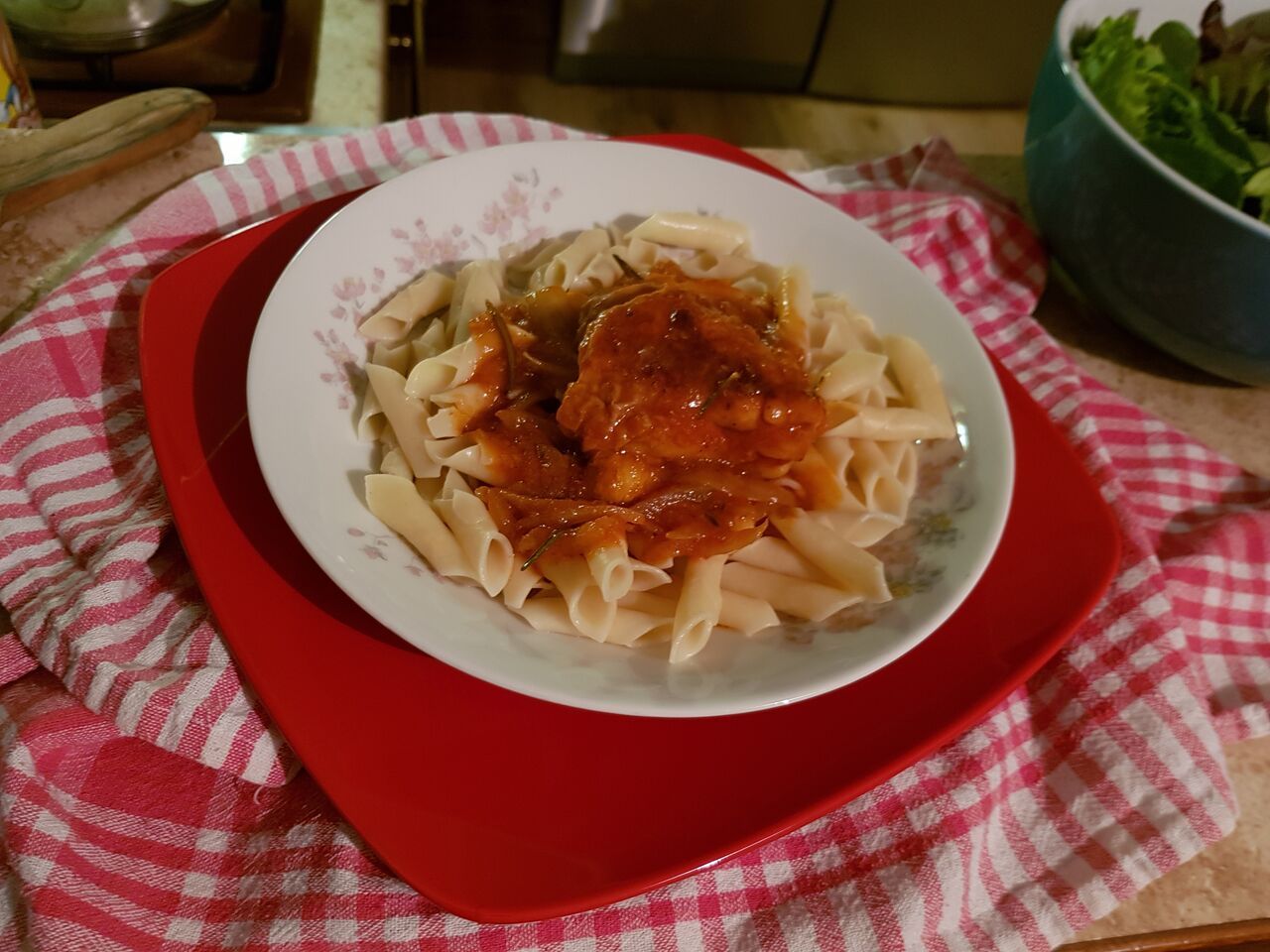

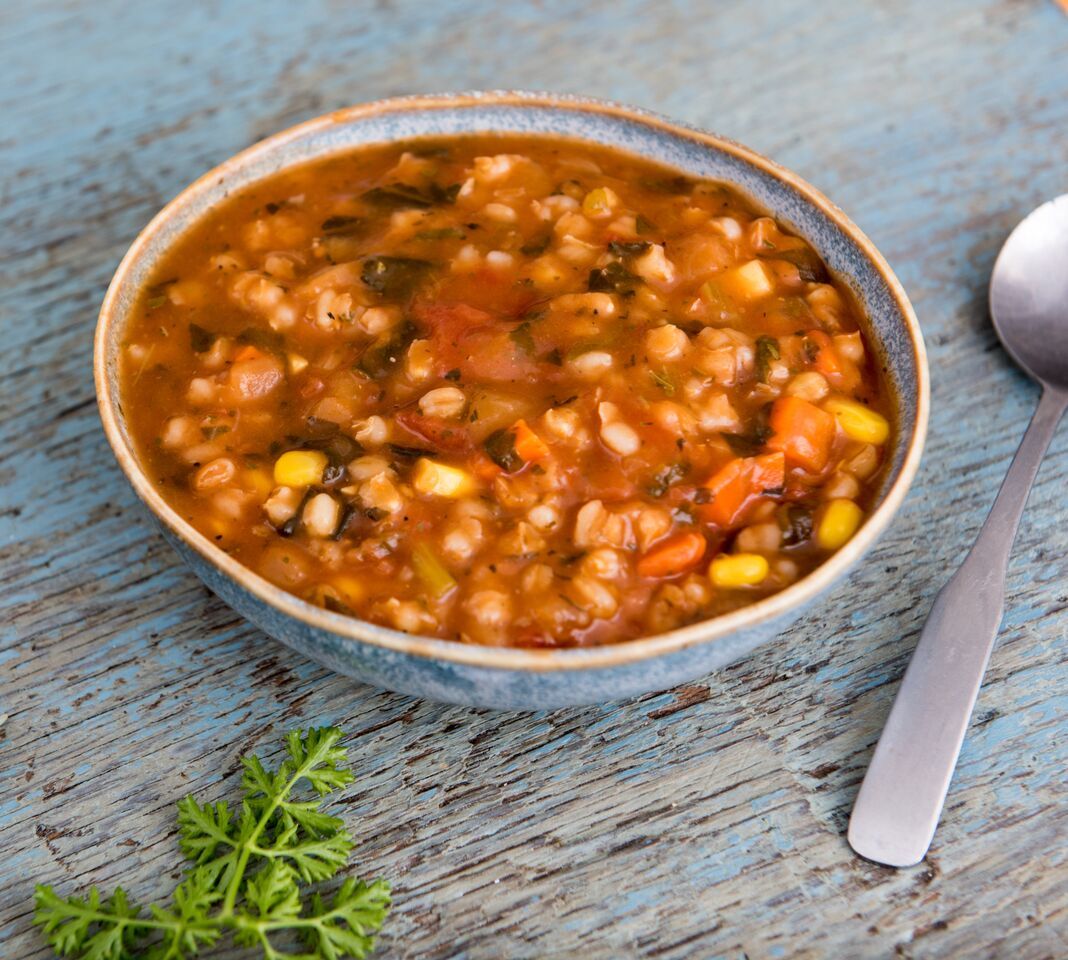
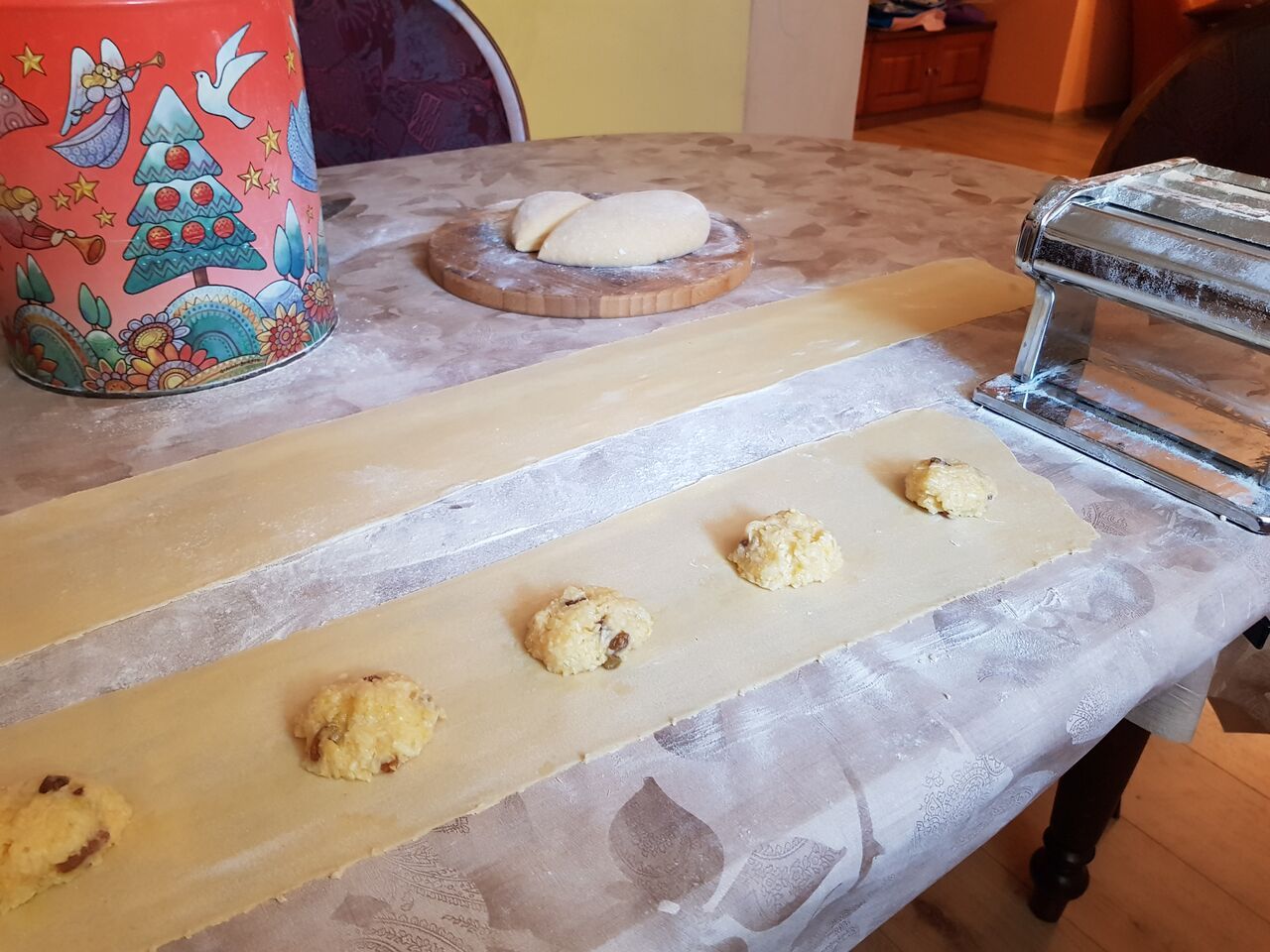
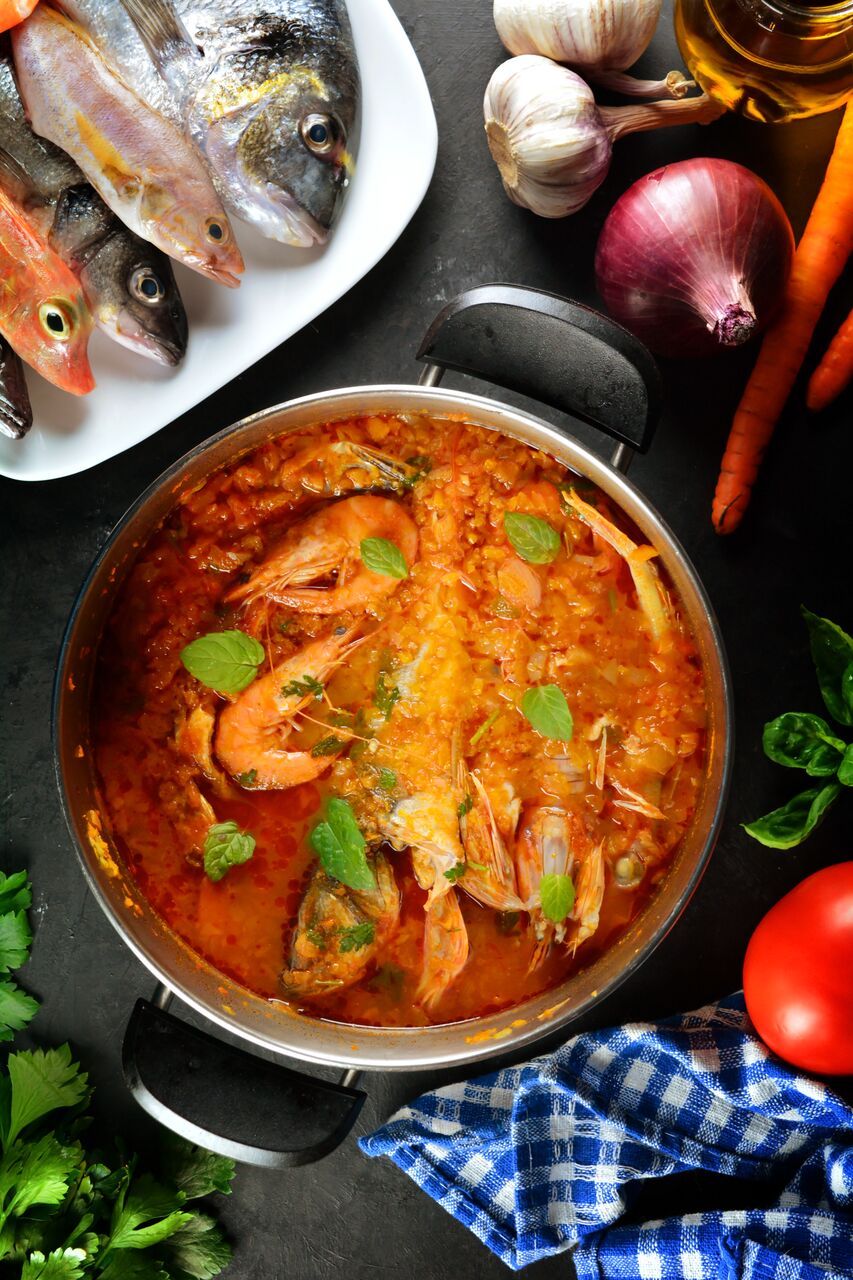



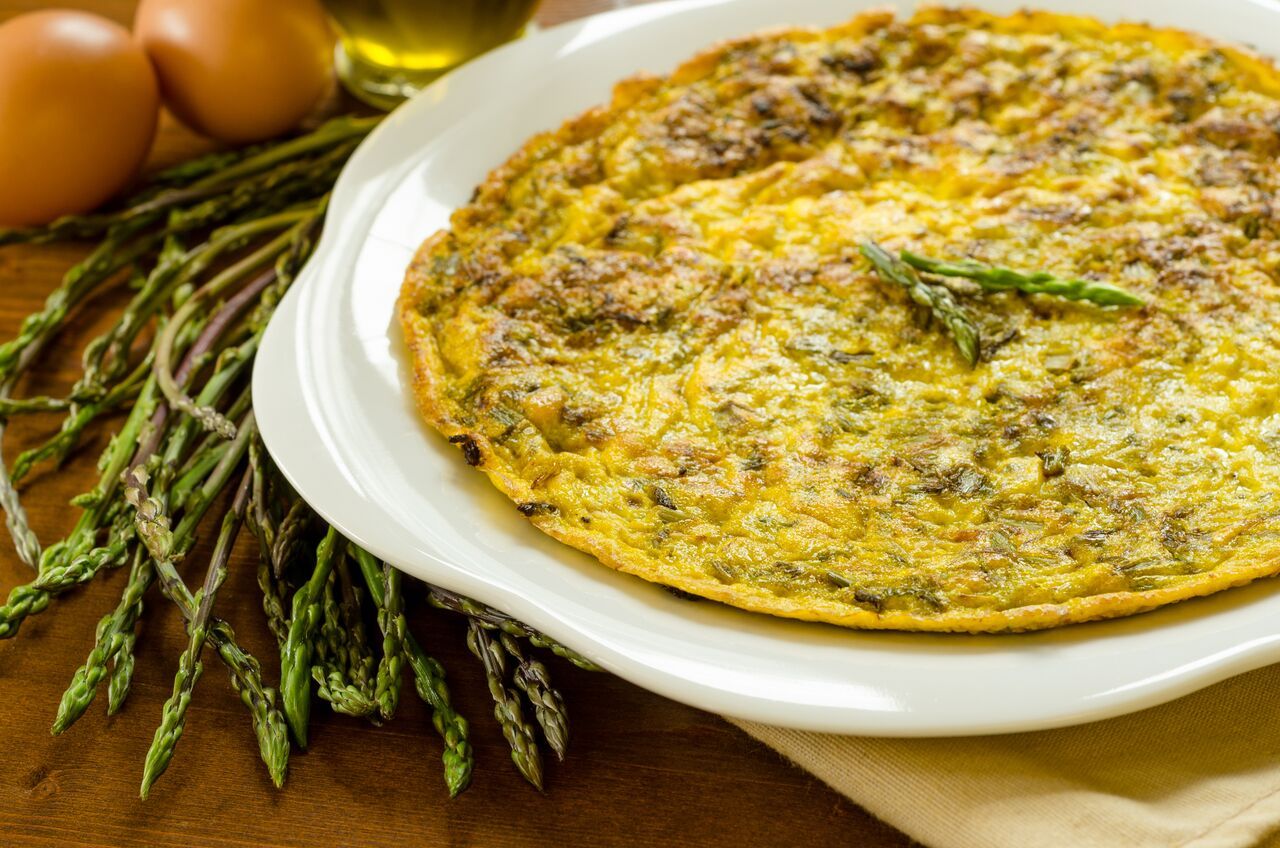
Fancy a Cool Drink? Early Tourism and the Ice Caves of Biokovo
June 19, 2022 - Before household appliances became a thing, keeping drinks cold used to be a much more complicated endeavour. Meet the ice caves of Biokovo.
Located in Dalmatia between the rivers of Cetina and Neretva, Biokovo is the second-highest mountain range in Croatia. It's a natural border between the coast and the Inland Dalmatia, and close to 200 m2 of its area is protected as a Nature Park.
The majestic range is sometimes described as the mountain that has 'its roots in the sea and a head crowned with lightning'. Its peak, St. Jura (St. George) stands at an elevation of 1762 metres, providing a spectacular view of the Adriatic Sea and Italy in the distance, inland Dalmatia, and mountains of Bosnia and Herzegovina. Biokovo is home to more than 1.500 species of flora and fauna; it houses 87 churches and chapels built at various moments in history. Apart from all the wonders proudly showing their faces in plain sight, the mountain keeps treasures hidden away: more than 400 caves.
Here's a question for you: have you ever thought about where the ice in your drink comes from? Probably not, as today the process isn't really that complex; someone poured some water in an ice cube tray, slipped it into a freezer, forgot about it for a couple of hours, and voila. Whether your ice was technically made by a waiter in a beach bar or bought in those massive bags of ice you can find at gas stations and in supermarkets, it's not really that big of a deal –as long as there's enough of it available.

Okay, how about we rewind the timeline a couple of decades? Fridges and freezers that are now standard household appliances have only been in use since the 1940s, and speaking of these parts, you might probably slap a few extra years on top of that. As you might have heard, organised tourism in Croatia has been happily trotting along for almost a century before our coast experienced the luxury of refrigerated goods. We might get heat waves these days, but at least we can run into a room equipped with AC and a mini fridge. What about heat waves in 1910? 1925? How did the poor tourists cool down?
That's where Biokovo comes in. Some of those 400 caves used to be (and still are) filled with eternal, ever-present ice. The locals who resided in various parts of the mountain range thought of a way to add to their budget in hard times: they harvested ice from the caves and transported icy blocks all the way to Makarska riviera, where the first hotels in operation used the priceless goods to refrigerate food and, supposedly, serve it in drinks. The icicles were first wrapped in beech leaves and sack cloth so they wouldn't melt too quickly, then loaded onto donkeys and mules. A whole process, one that entailed a long, wearying overnight journey from the caves to the coast in order for the ice to arrive on time, in good condition.

It's hard to guess if the guests wondered about the origin of their cold beverages. Imagine a random tourist in the first half of the 20th century asking where the ice comes from – what could the waiter even say? Underground? From the core of that mountain you can see in the distance? Or maybe... You wouldn't believe me if I told you.
Read more about Biokovo here. While you're at it, we have a great series about the National Parks of Croatia going on; learn more about the Kornati islands and the Brijuni islands.
Diocletian's Dream: a Stunning VR Experience Bringing Split History to Life
June 19, 2022 - How to combine modern technology and ancient heritage in a UNESCO World Heritage Site? Check out the incredible Diocletian's Dream VR experience, bringing Diocletian's Palace to life as never before.
How to bring a an ancient monument to life for all ages?
Diocletian's Palace is one of my favourite places in Croatia. Superbly located on the gorgeous Split waterfront, it is a vibrant living Roman city within a city than breathes history on every corner.
Walking tours of the palace are among the most popular activities in Split, and yet over the years, I have lost count of the number of times I have heard a variation of the following question to tour guides after the tour is complete:
"That was very interesting, but where is the actual palace?"
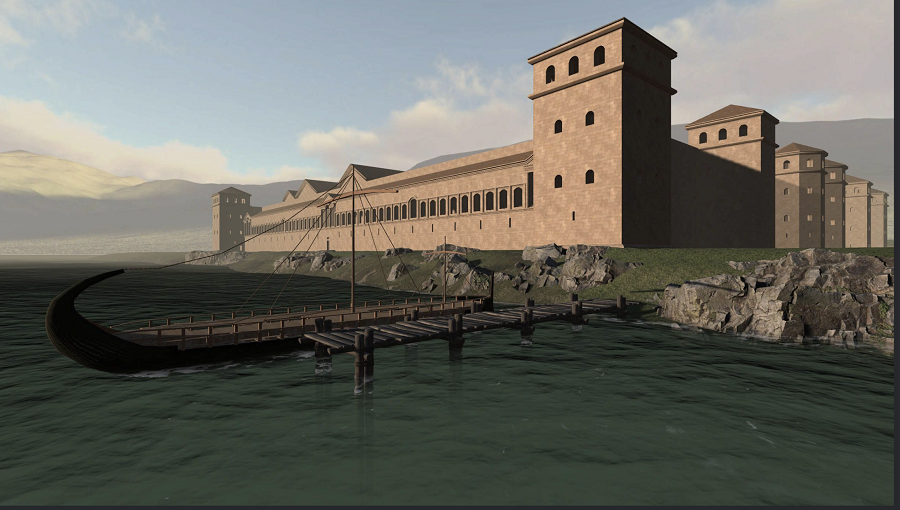
Other key Roman attractions such as Salona or the Pula Arena are easily identifiable for what they once were, but with so many cool bars, restaurants, museums and galleries, boutique hotels and AirBnBs, it is sometimes hard to imagine what Diocletian's Palace once was, never mind visualise it for what it was constructed - the retirement home of Emperor Diocletian. For years I have watched tour groups walk around taking photos and only half-listening to the guide. I always wondered exactly how much they were taking in. With the summer heat an additional factor, it was clear that the messages of the tour guides were only partially successful.
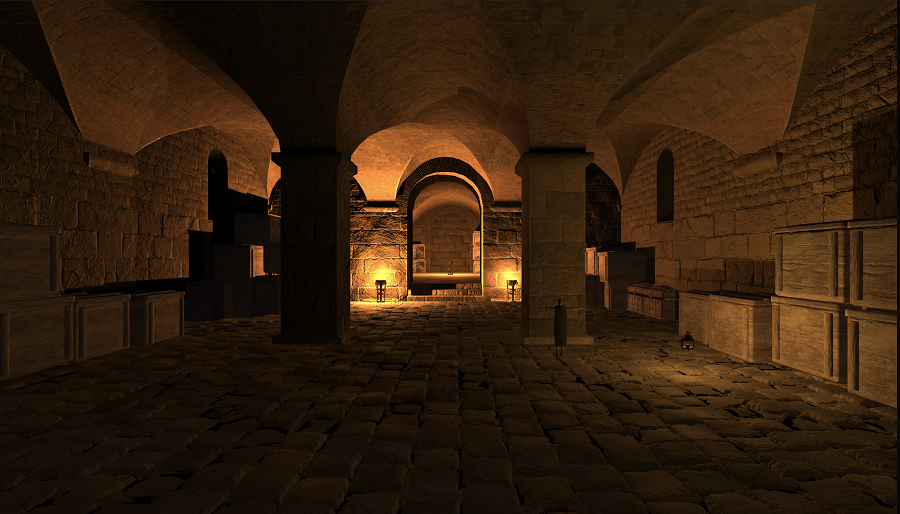
If only there was something which could explain the majesty of Diocletian's Palace as it once was in a simple and communicative way to suit the modern tourist.
I heard about a new concept called Diocletian's Dream over an excellent cocktail at Kavala Beach Bar on a quick trip to Split last week. Diocletian's Dream was apparently an Irish-Croatian parntership, offering a high-quality 15-minute Virtual Reality (VR) experience of life at the time of Diocletian, entertainingly narrated by a senior slave. As I was looking for some educational bonding experiences with my teenage daughter, Diocletian's Dream seemed to tick the box, and I put a visit on the agenda for the following day.

Located conveniently an an 80m2 ground floor space at the back of Djardin and overlooking the palace, Diocletian's Dream is perfectly located to compliment a walking tour of the palace. And while the imminent VR experience was bound to be spectacular, it was more than matched by the passion and enthusiasm of Irish co-owner Declan, who greeted us warmly.

One of the few such experiences in the world (they are currently about 5-6 others) and the first in Croatia, it didn't take long to become absorbed by Delcan's enthusiasm for the project or attention to detail. Everything had been factually checked with local experts, he assured, and the movie production crew had been painstaking in their attention to detail to get everything completely right. Actors, script writers and even some celebrity voices (including the lead singer of popular Croatian band TBF) were enlisted in the effort to bring 1,700 years of history to life for the modern tourist.
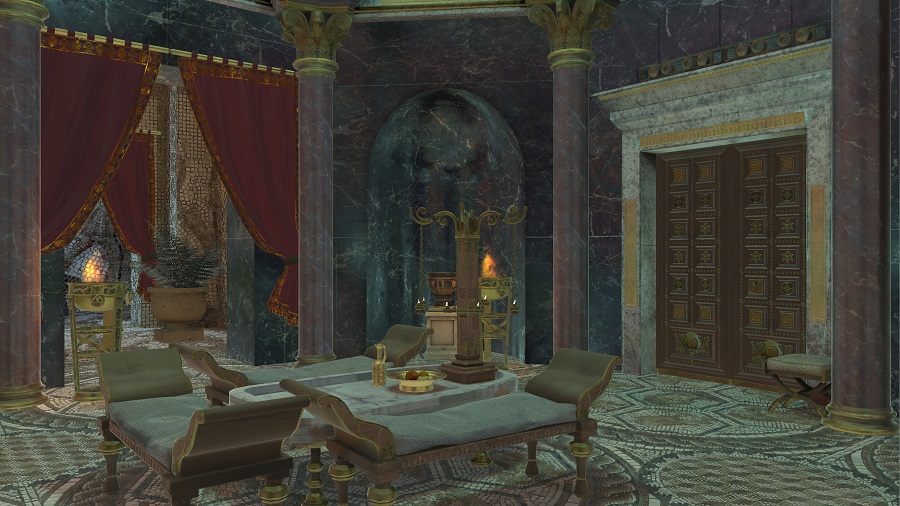
The first three impressions that struck me were cleanliness, space, and temperature. That airconditioning was a lifesaver with temperatures over 30 degrees outside. I could just imagine how refreshing it would be to come and enjoy the VR experience after walking around the palace. As this is clearly a project of passion, Declan and his partner have chosen comfort over profit. The beautifully designed and themed viewing room holds a maximum of 15 people, where they could perhaps have crammed in 30. There is a sitting area and use of a toilet for tour guides who want to relax after bringing their guests in. A very refreshing change from outside altogether.
As for the VR experience itself, I will not give away too many secrets as I really do encourage you to check it out yourself. My daughter laughed when I told her that this was my first real VR experience - how the generations are different when it comes to technology. With a choice of English, Croatian, French, German and Italian, I chose the English. Delcan applied my headset and I was transported back to 305 BC, with my very own slave tour guide. I was reminded not only to look ahead, but encouraged to look up, down and back. And I felt a little dizzy as we mimicked a Roman drone to get a bird's eye view of the palace 1,700 years ago.
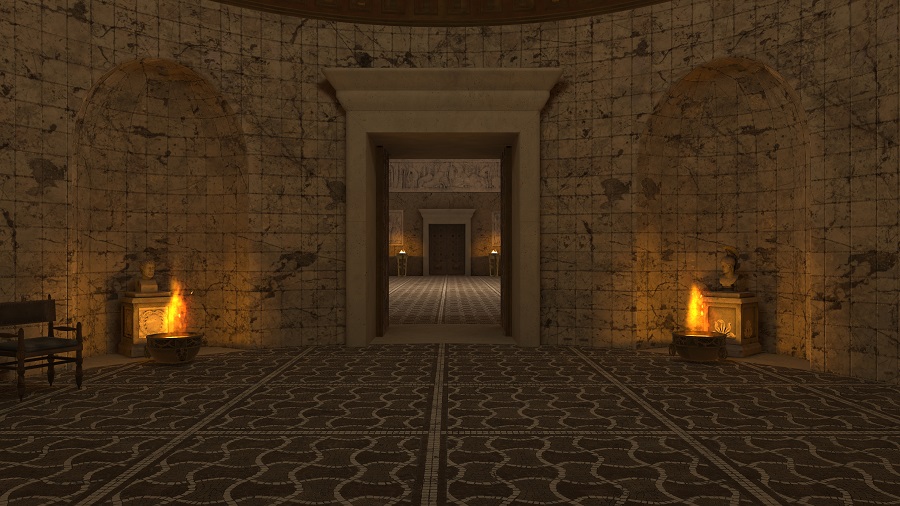
Apart from the excellent graphics and attention to detail, what makes Diocletian's Dream a winner is the way it tells the story. Rather than spouting facts and dates, the story developed through our slave guide was both educational and humourous, taking us not only through some of the key parts of the palace, but also through situations in daily life during the time of Diocletian. The storyteller succeeds in weaving in useful facts and observations about the palace into his story, facts that are with me still in a way that walking tours do not succeed.
The 15 minutes flew by, and my understanding of this magnificent palace was certainly enriched. Now I wanted to go to some of the locations featured and see them through fresh eyes.
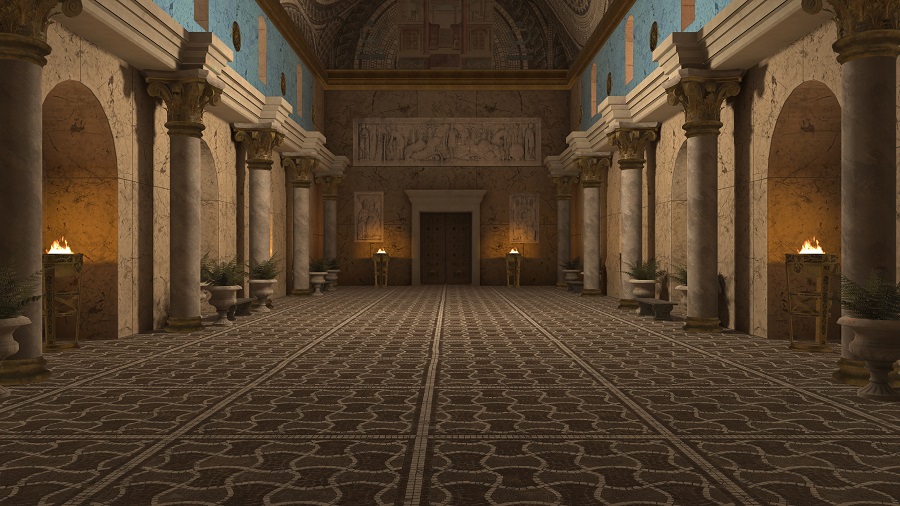
A visit to Diocletian's Dream costs 80 kuna for adults and 50 kuna for children. It is one of the few attractions in the city which is truly for all ages. And if you are trying to excite your kids about ancient heritage at a time when they just want to be on their smart phones, Diocletian's Dream is a little hard to beat.
Personally, I think it should be a recommended addition to all walking tours of the palace, as it really helps to fill in the gaps and make the palace come to life. I am just not sure which would be better, to do the VR experience before a walking tour, or after. The benefits of watching it before mean that you will be a lot more prepared and engaged for what you are about to experience. Having said that, perhaps seeing it at the end with that nice cool temperature is the perfect way to relax and fill in the gaps. Or perhaps both...
Looking online for feedback from other visitors, I was delighted to see it ranked number 1 out of 476 tours in Split. Deservedly so. And a really good vlog and interview with Declan with our friends from 45 Degrees Sailing.
The partnership between modern technology and ancient heritage is an important one for the development of tourism in the modern age, and it is not easy to get right. Diocletian's Dream has certainly managed. Learn more on the official Diocletian's Dream website.
To learn more about Diocletian's Palace and Split, check out the TC Split in a Page guide.
Have You Experienced the REAL Croatia? Take the Expat Test
June 19. 2022 - So many foreigners and expats know Zagreb and the coast, but not much more. How well do you know the REAL Croatia? Take the expat test, devised by a foreigner living in Vinkovci for almost 30 years.
A few months ago I attended a rather unique barbecue in eastern Croatia. The occasion was Vukovar Remembrance Day, the location an English pub in a field in the middle of nowhere outside Vinkovci, and the other partygoers foreign veterans from the Homeland War, who had come to pay their respects to fallen comrades at the annual event. It was quite an evening, which you can read about here.
I was introduced to a posh Brit who said something rather unusual to me as we clinked out first beer bottles of the night:
"Do you know, I have been coming to Croatia since 1992, and you are the first foreigner I have met here who didn't fight in the war."
Just as he was meeting a new species of expat in Croatia that night, so was I - it was the first time I had met foreigners who HAD fought in the war.
And so ensued a fascinating night and introduction to a world I knew little about.
The host for the evening was a Yorkshireman called Steve Gaunt, who volunteered to fight for Croatia, was wounded, and has managed to carve a jolly life in Vinkovci with his lovely local wife and kids, occupying himself with metal detecting, opening his pub, and even making the first cider in Croatia. You can learn more about Steve and the White Boar here, and I really encourage you to look him up if you are in the area.
Being a dour Yorskireman far from the coast, Steve's life in Croatia is a world away from the majority of expats here, and I have come to appreciate his various musings on life here.
And then today, this - a Croatian expat test to see how much foreigners here really know the whole of Croatia.
It is a little bit of fun, but also a very insightful list, and I would be curious to see how many long-time residents scored.
I got 19 out of 20, as I am yet to buy Steve a pint, unless drinking in his pub counts. As for the bonus question - Varazdin, Karlovac and Zagreb.
How did you fare?
I don't whine much on here, but I wondered just how much foreign visitors and ex-pats have really experienced Croatia. I have made up the quiz to test you. You need to have at least 25% YES answers to pass without researching. Ready?
1. Have you visited Croatia and NOT been on the coast?
2. Have you attended a sporting event in Croatia?
3. Have you waited in a bank for more than an hour?
4. Have you bought fish straight off a boat?
5. Have you seen any of these rivers; Danube, Sava, Drava?
6. Have you helped making plum brandy?
7. Have you helped pick grapes or olives? (stealing doesn't count)
8. Do you know what Ožujsko is?
9. Have you helped at a pig killing?
10. Have you seen people scavenging in rubbish bins?
11. Have you eaten carp?
12. Have you been further east than Zagreb?
13. Have you had a parking fine?
14. Have you been to a wedding or a burial in Croatia?
15. Do you know what Rukomet is?
16. Have you been in the home of a Croatian friend?
17. Have you visited at least one of these towns; Ilok, Vukovar, Našice, Koprivnica, Varaždin?
18. Have you ever been stopped by the police?
19. Have you driven in Croatia?
20. Have you ever bought me a beer in Croatia?
Bonus question
21. Have you paid less than 12 kuna for a half litre of beer in a bar in the last year? (where is it!!)
Health Ministry Decides on New Croatian Immunology Institute Location
June the 19th, 2022 - The much-talked-about Croatian Immunology Institute is one step closer to coming to fruition now that the involved ministries have chosen a location for the future facility.
As Poslovni Dnevnik/Marija Crnjak writes, through the joint efforts of the Ministry of Health, the Ministry of Physical Planning, Construction and State Property and the Immunology Institute, a solution was reached by which the Rugvica business zone near Zagreb will become the permanent home of the new Croatian Immunology Institute, the Ministry of Health reported recently.
''In the context of legal challenges we faced with the previous chosen location, we've made a significant step forward in continuing this strategic project and have shown the strong will and determination of the Croatian Government, the Ministry of Health and the Croatian Immunology Institute to remain committed to revitalising the Immunology Institute as an important institution in this country,'' said Health Minister Beros on the occasion of this decision.
With this decision, the Municipality of Rugvica, as the owner, donates to the Croatian Immunological Institute, land in the Rugvica working zone - north, 69,761 m2 with a potential minimum minimum size of 20,000 m3 for the construction of an entire biological drug factory, the construction of a separate plant for antitoxins, and plants for the production of animal immunosera intended for both human and animal use with the primary purpose of producing antitoxins for the venom of European snakes.
This Decision was preceded by a statement from the State Attorney's Office of the Republic of Croatia, the Ministry of the Economy and Sustainable Development, and the Ministry of Physical Planning, Construction and State Property found no legal obstacles in terms of Article 391 of the Property and Other Real Rights Act.
The construction of the entire factory will begin in no later than two years time, while the estimated construction time to the stage of functionality is nine months from the positive completion of the public tender, ie the selection of all of the contractors by tender. The method of construction of the production plant will be prefabricated modular segments of clean rooms designed and built outside the building and connected and formed inside the building, preceded by a series of preliminary works, from obtaining the necessary permits, evaluating the conceptual design and final design of the main project.
At the same time, a public tender has been prepared for publication for the construction of a new biopharmaceutical plant for the production of animal immunosera, ie drugs intended for both human and veterinary use with the primary purpose of producing antitoxins for European snake venom.
As the Croatian Immunology Institute has permits for animal testing, as well as breeding permits, there are some basic preconditions for building a plant for processing hyperimmune equine (horse) plasma within the new factory, as a complete unit in one location, where the processing, filling and equipping would take place. The existing resources on the farm in Sveta Nedelja will be used for all of the above.
"The Croatian Immunology Institute is the flagship of our science and deserves all possible interdepartmental efforts. The easiest thing in the world to do is to simply declare the end and throw in the towel at the first sign of any obstacles that understandably appeared due to the complexity of this project. We've chosen a harder but more correct way of going about things, we've taken an additional step forward and together we've found a solution to continue the revitalisation of the Croatian Immunology Institute.
In order to restore its reputation and further position it on the international map of leading manufacturers of vaccines for various purposes, as well as other products in demand in this market segment, in the first phase, vaccines against measles and rubella will be produced, as these are products needed by both the Croatian and world markets,'' concluded Minister Vili Beros, adding that this country now the opportunity to meet the preconditions for its own production of antitoxins, which would make Croatia self-sufficient in the production of snake antidote, which is especially in demand during the summer tourist season when bites are more common.
For more, make sure to check out our dedicated lifestyle section.
Croatian Mathematician Toni Milun Explains Inflation, Advises Citizens
June the 29th, 2022 - Well known Croatian mathematician Toni Milun has explained what's going on with the current inflation crisis, and offered advice to those wondering how they can improve their situations, stating that we could all be a little bit more financially literate.
As Poslovni Dnevnik writes, Croatian mathematician Toni Milun explained the meaning of inflation in real life, practical terms, and discussed just how much it affects the purchasing power of regular people and how we might better cope with all this, as reported by N1.
In a video, Croatian mathematician Toni Milun went into more depth about the practical side of inflation which is affecting each and every one of us in some way or another.
"When compared to last year, inflation is higher than 10 percent. This means that people who earned a monethly salary of 7,000 kuna last year, and still do today, can buy on average what they could last year for 6,300 kuna now. Inflation doesn't really mean the same thing for everyone.
People who use products which have been more affected by inflation, things which have become more expensive, such as fuel for a person who drives often, have more issues with ongoing inflation than someone who uses public transport that hasn't risen in price. If we want our purchasing power to remain the same, then our wages should increase by these 10 percent compared to last year. If they haven't grown by 10 percent, then we're a little poorer,'' explained Milun.
He also referred to the movement of interest rates. ''As for the interest rates, if a person has a variable interest rate, you need to check what it's tied to. I'm talking about the period from next month onwards. Everyone with an NRS interest rate - don't worry, you can relax for now. But if it’s Euribor, then make sure you look at the date it changes because new annuities arrive in July, it may be higher especially if you have a home loan you recently took out. It can be a few hundred kuna higher. Go to the bank, try to negotiate better terms,'' Croatian mathematician Toni Milun warned.
However, Milun is convinced that we will overcome these challenging times.
"We can all become more financially literate. Educate yourself, because doing that now has become very important ", Milun advised.
For more, make sure to check out our dedicated lifestyle section.
Conflict of Interest Commission Fines Croatian PM Plenkovic 3000 Kuna
June the 19th, 2022 - At a recently held session, the Commission for Deciding on Conflict of Interest passed a unanimous decision according to which Croatian PM Plenkovic was fined 3,000 kuna for incompatibilities when listing his assets and income, which he can pay in three equal installments.
As Poslovni Dnevnik writes, this was confirmed by the President of the Commission, Natasa Novakovic, as reported by Dnevnik.hr, and the aforementioned commission launched proceedings against Croatian PM Plenkovic back in early October last year.
In the period from 2016 to 2018, he reported higher income for his wife than what was really the case. It was stated that her annual salary stood at 121,385 kuna, and during 2016, 2017 and 2018, she actually received significantly less than that because she was on maternity and then parental leave until the third year of their child's life.
In addition to that, Croatian PM Plenkovic failed to state that back in 1997, his wife inherited a third of a plot in the cadastral municipality of Makose near Dubrovnik, which spans a total of 759 square metres, with a house of 61 square metres also skipped.
Namely, the Prime Minister's wife is the co-owner of a third of the plot she inherited as a minor after her father's death and, as she claims, she didn't even know about the co-ownership share because she doesn't use the property whatsoever.
Officials are required to provide accurate information
Croatian PM Plenkovic did appealed against the decision of the Commission for Deciding on Conflict of Interest due to the proceedings initiated against him. In addition to his salary, his wife earned other income during that period, and she didn't consider it appropriate to report a smaller amount, it is stated in his statement, which was read on Friday at the session of the Commission.
As for not registering the property she acquired way back in 1997 in the municipality of Makose near Dubrovnik, it is stated that Ana Maslac Plenkovic didn't know that she had even become the co-owner of that property, so, as was stated in Plenkovic's statement, the Prime Minister himself couldn't have possibly known about it either.
It was explained at the session that this was only a very minor disparity, but it was also pointed out that officials are obliged to provide absolutely precise data.
Having in mind these two omissions, the Commission determined that there was indeed an issue, and that Croatian PM Plenkovic would have to pay a fine in the amount of three thousand kuna, which can be paid in three equal installments.
For more, make sure to check out our dedicated politics section.
Trattoria La Pentola in Rabac Ranked Among Best in World on TripAdvisor
June the 19th, 2022 - Trattoria la Pentola in the beautiful Istrian town of Rabac has found itself ranked among the world's absolute best, winning the Travelers' Choice 2021 international award.
As Poslovni Dnevnik writes, Valamar Riviera's restaurant, Trattoria La Pentola in Rabac, has won the Travelers’ Choice 2021 international award, making it one of the ten percent of the world’s best restaurants on TripAdvisor. This new award will not only see this restaurant and Valamar gain more attention, but will further position the gorgeous Istrian peninsula high on the list for would-be tourists.
Users of the world's leading travel and tourism quality assessment portal, TripAdvisor, have recognised the value of Trattoria la Pentola in Rabac, awarding it this sought-after title based on the continuous excellent reviews it has always received from the global travel community.
“Our specialised and carefully designed offer can satisfy every guest, from those looking for a light snack or bruschetta accompanied by a glass of quality wine, to those with slightly higher gastronomic aspirations. At Trattoria La Pentola, we offer daily Mediterranean dishes prepared with ingredients sourced from local family farms (OPGs) in which the stamp of Italian cuisine can be clearly felt.
We also offer our guests hand-made homemade pasta, excellent pizzas, and barbecue dishes, homemade burgers, fish specialties and a selection of craft beers and local wines are available,'' said Dario Kinkela, the director of the food and beverage sector at Valamar Riviera.
It's worth mentioning that Rabac's award-winning Trattoria La Pentola is part of Valamar's famous modern gastronomic concept which, in Rabac together with Craft beer & grill and The Beat beach club, combines traditional recipes and modern cuisine, which raises the gastronomic offer of Rabac and its surroundings to a much higher level.
For more on local acheivements from all sectors, make sure to check out our dedicated Made in Croatia section.


.JPG)
.JPG)
